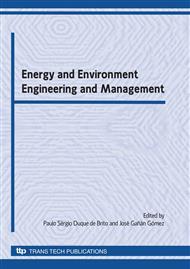p.1
p.9
p.15
p.21
p.27
p.35
p.41
p.49
p.55
Recovery of Degraded Areas in Vale do Paraíba, São Paulo, Brazil: Performance Indicators
Abstract:
The aim of restoration is recompose a new vegetation structure in order to obtain benefits such as the containment of bank erosion, reestablishment of a hydric and nutrient regime, and increase the diversity of species. The present paper evaluated the development of the vegetation introduced as ciliar forest around a mining lagoon through establishing indicators based on the vegetation structure, physic-chemical characteristics of the soil and the water. Results show that the indicators of vegetation, like dying of species and the covering of top were classified as negative factors. Regarding vegetation development, it was considered positive when individuals out of inundation points were analyzed. According to soil indicators, chemical factor pH acid suggests intoxication by aluminum, iron and manganese impeding development of the vegetation in the local. Topographic factor also caused erosion and dying/extinction of species localized in declining points and carried nutrients to the inundation point and finally to the sand mining pool.
Info:
Periodical:
Pages:
27-34
Citation:
Online since:
April 2010
Price:
Сopyright:
© 2010 Trans Tech Publications Ltd. All Rights Reserved
Share:
Citation:


